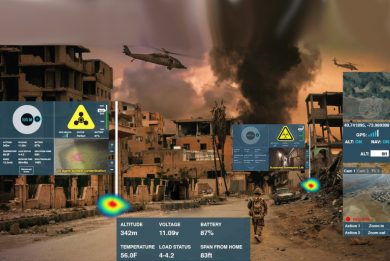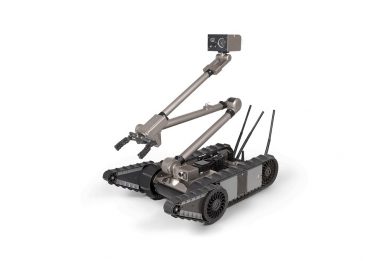
The CBRN issue
Definitely an issue in peer-to-peer conflicts, the CBRN field is another of FLIR’s specialties, Dr. Dave Cullin, the company VP of Global Business Development-Detection Systems, detailing the use of such sensors in MDOs. The dream of all soldiers, a small box providing all kind of information, will unfortunately remain a dream; “the reality is that physics tells us that we will not be able to get that box, and if we really want to detect and to identify the current threat, would it be chemical or biological, we must collect samples into a device and do point sensing, that is really state of the art where you get identification capability from CBRN sensors.”
Radiological detectors can work at a few meters distance, but when dealing with chemical and biological threats it is still necessary to collect the samples in order to get accurate and reliable results. “Sensors working at distance proved not to have sufficient fidelity, therefore to maintain distance the solution is to integrate those detectors in some unmanned platform and project the point sensor kilometres away to detect threats that are in the air, using UAVs, or on the ground, using UGVs, checking i.e. that routes a unit wants to take are not contaminated with some sort of area denial weapon,” Dr. Cullin states. This is what FLIR is doing within the NBCRV Sensor Suite Upgrade (SSU) programme, where i.e. an IBAC biological sensor has been integrated into a SkyRaider UAV carried on board the 8×8 CBRN reconnaissance vehicle.
But getting the data is not enough, presenting them to the user in an appropriate intuitive way is the follow-on step, so FLIR is developing decision-support tools that aggregate information collected at distance, presenting a video-game style picture to the user, “as we must remember that all our future users will be digital native,” Dr. Cullin points out, therefore showing results in that way might be the better option, especially for threats that cannot be seen or felt physically by the user. That said providing relevant data in the right way is based on some clear rules. “It is very important to nest the data that you share and the way you are sharing it inside the mission objective, so there is frameworks, there is protocols, there is C4ISR infrastructures that provides the place and the visualisation structure where to put all those data, and that is a great way to keep the focus on the mission without risking to turn it into a video game,” David Proulx points out, its comment extending of course to all other domains and not only to the CBRN one.



